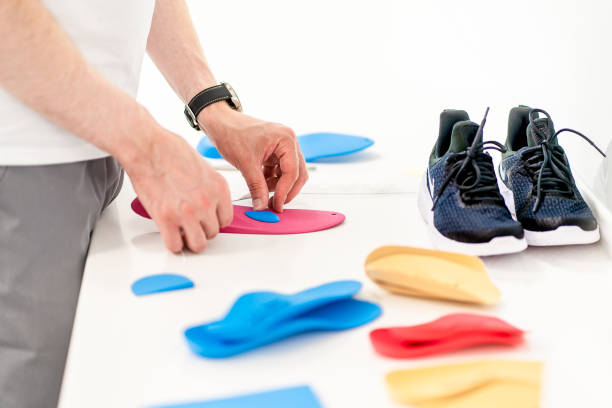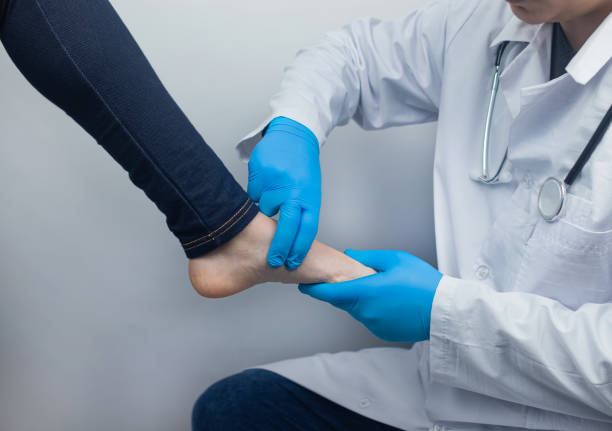Whether you are an athlete, spend a lot of time on your feet, or have an office job, wearing good shoes is important. It can improve your foot health, prevent injuries and even increase your performance.
It is important to have your feet measured every time you buy shoes. Your foot size can change throughout the day and over the years.

Arch Support
Arch support is the key to a healthy foot. This essential feature helps reduce foot pain and increases balance to help prevent injuries caused by improper movement. Without proper support, feet are subject to impact shock and stress that can lead to chronic foot pain. This pain can extend up to the ankles and calves, and may also radiate into the knees, hips, and lower back depending on the severity of the condition.
Everyone’s foot arch structure is unique, and it can change over time due to weight fluctuation, pregnancy, and medical conditions like arthritis. When it comes to finding shoes that provide adequate foot support, the most important thing is to know your foot type and visit a podiatrist in Perth for customized recommendations.
To determine your foot type, take a piece of cardboard and press it flat against your foot. If your footprint shows a complete contact area between the sole of your foot and the cardboard, then you have a low arch. This type of arch provides minimal natural shock absorption, and shoes described as “neutral” are typically recommended for most occasions.
On the other hand, if your footprint looks more “bow”-like in shape, you have a high arch. High arches require a shoe that provides sufficient cushioning for the arch. This helps reduce excessive pronation and supination, which are common foot movements associated with high arch feet that can cause imbalances and discomfort.
Heel Height
Heels are a great way to add height and style to your outfit, but you’ll want to make sure the heel is the right size for your foot. A too-small heel may cause your toes to squeeze uncomfortably or lead to Morton’s neuroma, while a too-large heel can create unstable gait and lead to ankle problems over time.
The best way to find the right heel height is to have someone measure the distance between your heel and the ball of your foot while you’re sitting in a chair and stretching your leg out in front of you. This allows your heel and the rest of your foot to relax and be measured in their most natural state. Alternatively, you can use a ruler on your own but it’s more difficult to get an accurate measurement without having the flexibility of having another person assist you.
The ideal heel height for most people is between 7 and 21 ponts, which is about 1 to 2 inches (2.5 to 5.1 cm). However, this can vary from one person to the next based on their foot structure, health, and comfort level. If you’re new to heels or have a sensitive foot, start with lower heel heights and work your way up from there. A small heel can still provide a nice height boost while also making your feet feel comfortable all day long.

Toe Box
The toe box is the part of the shoe that covers and protects your toes and forefoot. This area can be either round, square or pointed in shape, and the deeper the toe box, the more room your toes will have to spread and move around comfortably. Shoes with a shallow toe box, often found in dress shoes, pumps and ballet flats, can lead to problems such as Morton’s neuroma (an inflamed nerve in the ball of the foot), blisters, ingrown toenails, corns, calluses, hammertoes and even bunions.
Research shows that wider toe boxes help your feet by improving toe alignment, preventing toes from crowding and encouraging your toes to spread out naturally. This helps reduce or prevent many common foot ailments like bunions, hammertoes and plantar fasciitis.
If you are unsure of what size toe box is best for your foot, a podiatrist Fremantle can measure the width of your feet and recommend the best size shoes. You can also try a pair of shoes on at a store and trace your foot across the insole to see how far your toes are able to splay. This can tell you whether the toe box of the shoe is too narrow for your foot. If your toes are unable to spread out, you will need to wear a larger shoe size for optimal outcomes.
Ankle Support
Whether you are an athlete, spend your workday on your feet or enjoy a leisurely walk, wearing shoes that provide ankle support is vital to healthy foot health. The wrong footwear can cause or exacerbate preventable problems and lead to foot, hip, knee and back pain. Shoes with a level heel height can help reduce stress on the calf and achilles, while shoes with adequate ankle support can help prevent ankle inversion injuries.
The ankle is comprised of seven tarsal bones that are great at flexing and moving, but they need stability to help prevent injuries, especially when you’re on your feet for long periods of time or participating in sports that require quick changes of direction. Shoes that have adequate arch support can foster this stability and prevent you from rolling or twisting your ankles, explains Doctor. Shoes with a heel cup can also be helpful in alleviating pressure beneath the heels, which can contribute to foot and ankle pain.
Walking for exercise is good for your body, but walking in the wrong shoe can irritate your feet and aggravate existing ankle injuries, says orthopaedic foot . To avoid the pitfalls, he suggests choosing shoes with ample ankle support, which includes motion control and stability features that help decrease excessive movement in the foot and ankle, and high-top shoes for extra support around the ankle.




